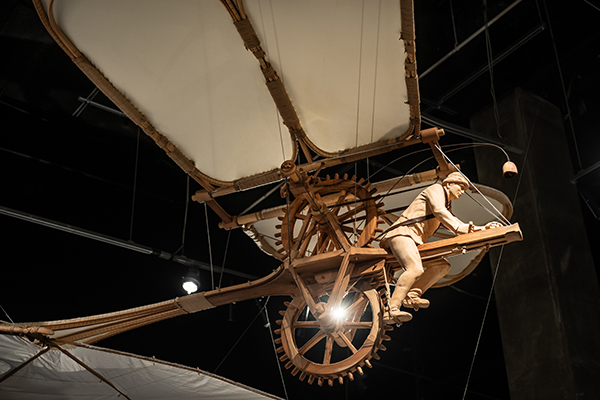MOVIE REVIEW: Revolutionaries revisit 1960s in ‘One Battle After Another’

Teyana Taylor plays Perfidia, a 1960s revolutionary trying to find herself 20 years later in ‘One Battle After Another.’ Sean Penn and Leonardo DiCaprio also star in the film.
Courtesy photo
By Dwight Brown
Contributing Writer
The revolution will not be televised. But it’s been made into a movie.
They knew what they were doing in the 1960s. Helping the less fortunate escape arrest. Robbing banks. Sticking it to the man. Rebelling against military authority run amuck.
And so, this group of revolutionaries, French 75, fought in the dark and battled during broad daylight. Trying to bring justice to a world gone askew. Committing crimes and political/social performance art.
That’s the gist of “One Battle After Another.”
Back in the day, Perfidia (played by Teyana Taylor) was the bravest of the bunch. An Amazon warrior fearless against military forces. Also, greatly in love with her partner Bob Ferguson (played by Leonardo DiCaprio,).
They were the king and queen of their movement. She flaunted her revolutionary power and sexual prowess. In part, that led her to an odd encounter with the enemy, a Col. Steven J. Lockjaw (played by Sean Penn). A mistake that led to more mistakes.
And so, years, later, after Perfidia’s bad choices metastasized, her legend was tarnished. Now, her man Bob is a single dad raising her teenage daughter Willa (played by Chase Infiniti) and trying to maintain a quiet life.
Slowed down somewhat by a love of weed and drink, even within the haze of being constantly high, Bob is focused on keeping his daughter safe. Protected from malevolent military forces and corrupt commanders. Protected until a phone call warns him that danger is around the corner.
That’s the foundation of director/writer Paul Thomas Anderson’s (“There Will Be Blood”) take on the chaotic political scene back in the ‘60s that segued into the repressive ’80s. When and where a bunch of anarchists, whose heyday was long over, were still hunted like prey by the military. It feels like the script, project and themes are going in several directions.
An obvious commentary on the increasingly militaristic times we live in now, where cities are being shadowed by U.S. armed forces and ICE agents.
Then there’s the story about the strong radicalized woman Perfidia, who’s out to save the world but is shamed by weaknesses that hurt her and those she loves.
Parts of the screenplay are based on the postmodern fiction novel “Vineland,” by Thomas Pynchon. A tale that follows a father and daughter, descendants of 1960s radical politics, as they live in Ronald Reagan’s 1980s America when counterculture waned and conservatism dominated.
That’s a lot to digest. And that’s the issue. Splintered ideas. A narrative that won’t pull all audiences through.
Yes they’ll care that Bob and Willa are under attack. They’ll hate Captain Lockjaw for a variety of reasons, including trying to join an elite white racist men’s club that’s bent on racial purification.
Under normal circumstances watching protagonists trying to beat the antagonists would be enough. Not here. Something is off. Likely the distracting political satire vibe that may further sideline viewers’ emotions. Like hearing an inside joke that’s just not funny or ironic enough.
It’s a miscue that affects some performances, too. DiCaprio knows how to interpret unique characters better than most.
A complicated teen in “The Basketball Diaries,” an adventurous young man in “Titanic” and middle-aged-frontiersman in “Revenant.” He finds the nuances in the people he plays in ways others can’t. He’s a chameleon whose artistry is so sleight of hand you never notice him acting.
Yet here, because the film has tonal issues, his half comic performance seems like wasted gimmickry, like he’s struggling to find Bob’s soul.
Penn’s performance meets the same fate. This is a versatile, formidable actor whose won Oscars for “Milk” and “Mystic River.” Yet his interpretation of Lockjaw, a sordid horny and evil man, seems affected at best.
The facial expressions and nervous ticks might have worked on a similar character in another movie. On the other hand, Taylor adds an intensity to Perfidia that fleshes out her complex persona well. When she brandishes a rifle, runs for her life and ties up her lovers. You don’t wonder if she would actually do it. You know she would.
Though the script may cause some debate, Anderson’s directing skills won’t. A night scene in which young men try to help Bob escape from soldiers by fleeing across rooftops is captivating.
The guys are gliding on skateboards and jumping roof to roof. It’s a memorable vision, second only to a car chase sequence when Willa is being chased by an assassin and the assassin is being chased by Bob. The autos zoom over a California highway that runs over hills and down valleys.
The footage shot by cinematographer Michael Bauman (“Licorice Pizza”), is as mesmerizing as the intensifying musical score by Jonny Greenwood (“The Power of the Dog”). The rest of the tech team (production designer Florencia Martin, costume designer Coleen Atwood, editor Andy Jurgensen), helps to evoke the time and place.
Still, it may be hard for audiences to conjure up decisive feelings, of any magnitude, for what they see. It’s easy to remain distant. Detached. Observant but not absorbed.
To like some of the pieces but not the whole puzzle. Yes, the revolution has been cinematized. Sometimes it’s a clear vision. Sometimes not.
Dwight Brown is the film critic for the National Newspaper Publishers Association News Wire.





